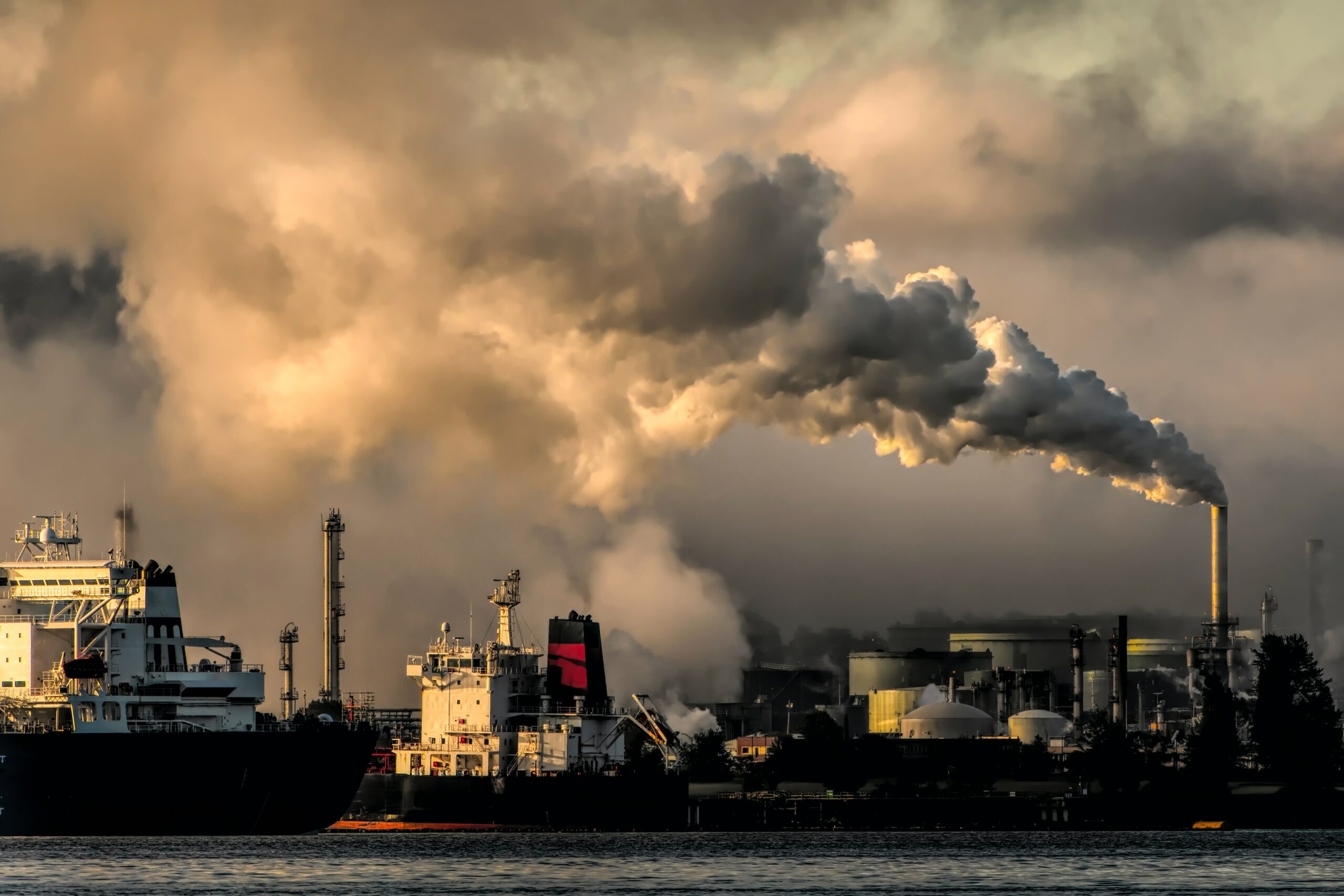Carbon credits can be daunting. There is an incredible amount of information out there telling you what to do. Since we can help businesses with their carbon credit journey, we decided to make a how-to guide with all of the information you need to get started!
What is a carbon footprint?
A carbon footprint, by definition, is the amount of carbon dioxide (CO2) and other carbon compounds emitted due to the consumption of fossil fuels by a particular person, group, business, etc. The reason you hear so much about carbon and carbon footprints when reading about climate change and the environmental impact big companies have had on the environment is because CO2 accounts for about 76 percent of total greenhouse gas emissions (Center for Climate and Energy Solutions, 2019, 2021)
Climate change and global warming have become buzzwords in the media as big corporations have committed to being green in the upcoming years to help combat climate change. When these companies claim to go green, more often than not they are pledging to be carbon neutral in the near future.
ClimatePartner, leaders in the climate and green industries describe companies as being carbon neutral when they calculate and are aware of the amount of carbon they are producing and actively participate in carbon offsetting projects. “Offsetting carbon emissions, in addition to avoidance and reduction, is an important step in holistic climate action,” says the carbon experts over at ClimatePartner.
When deciding to be carbon neutral, a company can achieve that in many ways. All ways are considered “offset projects” and can be anything from “distributing efficient cooking stoves to capturing methane gas at landfill sites. Energy-based projects such as these are designed to make quicker and more permanent savings than planting trees, and, as a bonus, to offer social benefits,” (The Guardian, 2011).
The most common offset project is investing in carbon credits.
What are carbon credits?
A carbon credit is a permit or an allowance to release CO2. Each carbon credit is one ton of carbon dioxide removed from the atmosphere ( Citizens’ Climate Lobby, 2022). Most carbon credits are purchased by large companies with mass manufacturing businesses and practices that create mass amounts of carbon.
This includes companies such as Amazon that have many warehouses, vehicles, and machines that produce carbon.
A carbon credit is usually created through planting trees to offset the carbon production or other environmental practices that essentially counter-balance the carbon creation from these companies. Carbon credits can be bought or the government can use them to cap the amount of carbon a company is legally allowed to emit during their practices.
The government usually gets involved with mega-corporations that produce a lot of carbon by themselves. Smaller companies with a smaller carbon footprint usually will not be involved with the government in this instance but they can still buy and sell carbon credits to remain green by their own standards.
Carbon credits were created to reduce and eventually dissolve greenhouse gas emissions. The current practice is as follows: businesses that pollute are given a certain amount of carbon credits per year and it is reduced over time. Companies and businesses with leftover credits can sell these credits for a profit. Carbon credits create a monetary incentive for companies to reduce their carbon emissions. Those that cannot easily reduce emissions can still operate, at a higher financial cost ( Investopedia, 2022).
Why are carbon credits important to the environment?
Carbon credits were created to help cap, control, and reduce greenhouse gas emissions. “CO2 has proven to be a significant contributor to air pollution, taking a substantial role in the greenhouse effect. That’s because carbon dioxide traps radiation at the ground level, resulting in ground-level ozone. That prevents the earth from cooling during the night and warms ocean water,” says Emilie Brooks, writer at Eco Jungle.
The effects of excessive CO2 production can lead to catastrophic results over time such as animal extinction, increased natural disasters, such as hurricanes that grow stronger with warm ocean water, and the destruction of farmland and crops.
Green initiatives not only help support planet health but many customers are driven to green brands.
Why are carbon credits important for your business?
Carbon credits can be beneficial to businesses not just ecologically, but also monetarily and socially.
Carbon credits, at a strictly business level, can be beneficial to a company if they change their pollution habits to save credits. By saving these credits, they can then sell any leftover credits to other businesses for a generous profit margin.
As for socially, companies using carbon credits are participating in some sort of carbon offsetting program. A carbon offsetting program can be anything from planting a tree for every ton of carbon produced, reducing the use of airplanes, and, of course, purchasing and using carbon credits. These programs can be used in PR moves or advertising campaigns to show customers that the company is turning a greener leaf.
Customers appreciate green initiatives. According to Forbes, “68% of millennials bought a product with a social or environmental benefit in the past 12 months. 87% of consumers will have a more positive image of a company that supports social or environmental issues. 88% will be more loyal to a company that supports social or environmental issues. 87% would buy a product with a social and environmental benefit if given the opportunity.”
With proof that customers care about where their products come from and who they are supporting, carbon credits are more important than ever.
How TCP can help you obtain carbon credits?
TCP can help companies with carbon credits by reducing their carbon footprint. There are many ways we can help, from the complete replacement of dry ice to more effective shipping practices for frozen and refrigerated food and medical items.
When a company either purchases or is given carbon credits, they are expected to create a certain amount of carbon or less. TCP can help with this by reducing the use of dry ice and creating a long-lasting replacement that can help with green initiatives.
To replace dry ice, TCP has created Phase Change Materials, or PCMs. Traditional gel packs and dry ice are not able to reach/maintain sub-zero performance. PCMs are capable of storing and releasing large amounts of energy, allowing them to maintain a temperature within a specific range. PCMs can reliably achieve and maintain 0°C (32°F) Refrigerated, -7°C (19.4°F) Frozen, -16°C (3.2°F) Frozen, and -21°C (-5.8°F) Ultra-cold, depending on the applications or need.
Dry ice takes incredible amounts of energy to produce, then immediately starts releasing CO2 the minute it’s created. According to dry ice manufacturer Polar Ice, “Dry Ice is manufactured by compressing and cooling gaseous CO2 under high pressure to produce liquid CO2 initially. The liquid then expands under a reduced pressure to produce CO2 snow. Finally, this snow is compressed by a hydraulic press into convenient dry ice blocks, slices, or pellets.” This is harmful to the environment if a company is using mass amounts of dry ice to transport items and can eat into those carbon credits quickly.
PCMs are made of food-grade high-density polyethylene (HDPE) plastic which can be made of recycled materials, staying out of landfills. PCMs can last upwards of 5 years and be reused continuously, which cannot be said for dry ice. The carbon impact of the creation process is less than that of dry ice and it does not continue to add to the atmosphere once created.
How to apply for carbon credits?
Most companies do not produce enough pollution to garner government attention, which would give companies carbon credits as an incentive to start cutting their pollution back. The majority of companies can apply for carbon credits through Compliance Carbon Markets which is government regulated. This means that the government will tell an industry as a whole how much carbon they can produce and there will be consequences if the company produces more. Companies that go below their allotted carbon credits are allowed to sell the remaining credits to companies that want more, which is one way to obtain credits without government involvement.
There is also the voluntary carbon market, which isn’t limited to companies in a regulated area and individuals can purchase offsets. These can be purchased through third-party members and are bought by individuals and companies that choose to make a difference, not regulated to make a difference.
References
- https://www.c2es.org/content/international-emissions/#:~:text=CO2%20accounts%20for%20about%2076,6%20percent%20to%20global%20emissions.
- https://www.climatepartner.com/en/carbon-neutral#:~:text=Carbon%20neutral%20definition,step%20in%20holistic%20climate%20action.
- https://www.theguardian.com/environment/2011/sep/16/carbon-offset-projects-carbon-emissions
- https://citizensclimatelobby.org/blog/policy/a-carbon-price-is-better-than-carbon-credits/?utm_source=google&utm_medium=ppc&utm_campaign={campaign}&utm_term=carbon%20credits&gclid=CjwKCAiA68ebBhB-EiwALVC-NgYX5j66Jg4rMMfBjpGa69gQdX8B8Q7TI_JcZzjGYGDL-aNSnx2_MRoCa6QQAvD_BwE
- https://www.investopedia.com/terms/c/carbon_credit.asp
- https://ecojungle.net/post/carbon-dioxide-effects-on-humans-and-the-environment/#:~:text=CO2%20has%20proven%20to%20be,night%20and%20warms%20ocean%20waters.
- https://www.forbes.com/sites/forbesnycouncil/2018/11/21/do-customers-really-care-about-your-environmental-impact/?sh=443eee62240d
- https://dryice.ie/what-is-dry-ice/#:~:text=Dry%20Ice%20is%20manufactured%20by,Ice%20blocks%2C%20slices%20or%20pellets.




